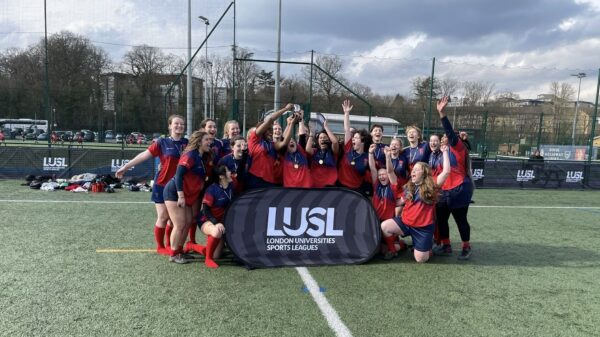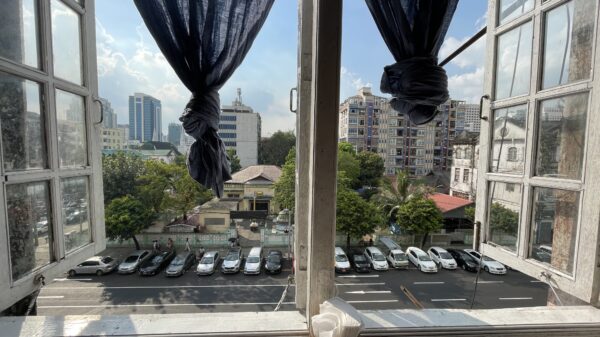Boston Political Review Co-Editor in Chief Justin Dynia on the historic appointment of Boston’s first black mayor and what it means for a city once plagued by racial hatred
When President Joe Biden announced that now former Boston Mayor Marty Walsh would serve as his Secretary of Labor, a new chapter of Boston’s history began. On March 24, 2021, Kim M. Janey was sworn in as the acting Mayor of Boston, the first woman and African-American to hold the office. The seismic shift comes after two hundred years of white males dominating the position. On April 6, Janey announced she would be running for a full term on a bright sunny Tuesday morning in Nubian Square. Janey takes the reins in the midst of a period of deliberate revitalisation wherein she is tasked with steering the city through the challenges of the pandemic. The road to her ascension spans centuries in a city with both a complicated mayoral and racial history.
Bean-town’s Bosses Over the Years
Depending on how you slice it, Janey is either the 55th Mayor of Boston or around the 60th if you count her fellow predecessors with the “acting†designation. The position was created in 1822 when Boston became the first town in the state to be granted a city charter. Initially, the mayor faced an election every year but this was changed to every two years in 1895 and every then to four years in 1910. Attempted reform by the Republican Party at the turn of the century failed to prevent a Democratic-Irish majority from dominating the position, as only one Republican has held the post since 1909. John F. “Honey Fitz†Fitzgerald, the grandfather of Boston native and former President John F. Kennedy, was the first American-born Irish Catholic mayor, kicking off a powerful political machine that controlled the city for decades. His successor, James M. Curley, served four terms as mayor, became Governor of Massachusetts, spent time in Congress, and did a stint in prison all while growing their syndicate. Local lore even holds that financier Joseph P. Kennedy paid off Curley’s debts and encouraged him to leave a vacant seat in Congress for his son in 1946 (a gambit that paid off). Boston experienced a number of dramatic labour reforms and investments in the city’s infrastructure under their leadership. However, they also ran the city’s finances into the ground by granting exorbitant city contracts to their cronies alongside other massive corruption schemes. Money and crime defined the era just as much as policy and politics.
John Hynes took over as acting Mayor during Curley’s prison stint and handily defeated him twice in 1949 and 1951. Hynes and his successors, including John Collins and Kevin White, began a period of massive modernization dubbed “New Boston” that transformed the city as we know it today. The infamous and now deceased Central Artery highway system (good riddance) was put in place as roadways, bridges, and public transportation saw a large scale overhaul. Hynes also established the “Freedom Trail” and promoted development of the city as a historical hotspot and tourist destination.
Boston got another acting mayor in 1993 when Mayor Thomas Menino took over for Mayor Raymond Flynn who joined President Bill Clinton’s administration. Menino served a legendary mayorship that lasted 21 years and included award-winning urban development and wicked high approval ratings that earned him the nickname “Mayor for Life.†Menino celebrated diversity as one of the city’s biggest strengths. He actively served Boston’s non-white community and was recognised by the U.S. Department of Health and Human Services in 2006 for his efforts to create better health outcomes for minorities in Boston’s hospital system.
Boston’s mayors have loomed large over the city throughout its history. Most look at their leadership, however, some ask who they truly served. Boston continues to struggle with its racist history even as it welcomes a Black mayor and makes progress to promote racial equity and diversity.
Race in Boston and the Red Sox, of course
Boston became a hotbed of the abolitionist movement in the 19th century. In 1831, William Lloyd Garrison founded The Liberator, a publication that became the country’s leading anti-slavery newspaper in the run-up to the American Civil War. The city was also a centre of opposition to the Fugitive Slave Laws of the 1850s and served as an Underground Railroad hub. After the Civil War, the white Anglo-Saxon Protestant elites known as “Boston Brahmins†consolidated control of the city. They kept tight social circles based on familial lineage and wealth, and the Brahmins in government often wielded their power to enact discriminatory laws against immigrants and African Americans. Immigrants and African Americans faced hurdles in obtaining education, jobs, and government assistance. Social stratification in the city made it clear that they were not welcome. Mayors such as Honey Fitz and Curley continued to uphold this system, maintaining segregation and discrimination in most public sectors.
One cannot discuss Boston’s history without mentioning the beloved Red Sox. On April 15, 1947, Jackie Robinson made his debut for the Los Angeles Dodgers as the first-ever Black player to participate in Major League Baseball. The Red Sox hosted Jackie Robinson and several other Black players for a tryout in 1945. The tryouts were a sham though, only offered due to pressure from a city councillor in the hopes of discouraging the players from ever trying to swing for the big leagues. Infielder Pumpsie Green made his debut in 1959 as the Red Sox’s first-ever Black player, making them the last team in the MLB to integrate. This delay can be attributed to former Red Sox President Tom Yawkey, a noted racist who resisted racial integration in every part of the organisation for his four decades in charge of the team. A Boston Globe investigation in 2018, nominated as a Pulitzer finalist for local reporting, revealed that it was only after mounting media and political pressure from an NAACP investigation into the Red Sox’s hiring practices that Yawkey relented. A street that bore his name outside Fenway Park was renamed Jersey Street in 2018 to accordingly reflect his record.
Boston experienced significant struggles in becoming a more racially integrated city over the course of the 20th century. The city witnessed high racial tensions and violent clashes after a federal court ordered the Boston Public School system to desegregate its schools in 1974. This order mandated that a new system of busing be implemented to integrate the schools, so white students were forced to attend predominantly African American schools and vice versa. A series of violent protests and demonstrations ensued for several years afterwards, epitomized by the 1976 picture “The Soiling of Old Glory†captured by Stanley Forman. The picture shows white protestors impaling Ted Landsmark, a respected Black lawyer, with an American flag as he left work. Mayor Janey herself recalls her traumatizing experience of facing racist vitriol on her way from her home in the South End to her school in predominantly white Charlestown.
The situation reached a boiling point in the equally hot summer of 1975, in which the cauldron of tension and violence felt like it could spill over into a civil war. Former Boston Mayor Kevin White went so far as to say,
The lively Red Sox team, led by Black outfielder and Sox legend Jim Rice, excited fans with wild games and comebacks that brought them to the World Series. Several other Black players had key roles in the team that year. Paradoxically, the city tottered on the border of a race war while the success of a racially integrated Red Sox team prevented Bostonians from crossing that border. Imagining a white student from Southie protesting and a Black student bused to school in Southie both coming home to put all their hope in the same baseball team serves as a microcosm of the nuanced history of integration in the Red Sox and Boston.
Where We Go From Here
Racial inequalities still plague the city today. In 1950, about 95% of Bostonians identified as white. According to an American Community Survey in 2017, 52.76% of the Boston population identified as white, while 25% identified as Black or African American. The white population in Boston dropped by more than 40% over a 67 year period, a sizable demographic shift. Diversity does not imply inclusion, though. This same survey also revealed that white Bostonians still graduated from high school, earned a bachelor’s degree, and obtained employment at higher rates than Black Bostonians. Boston also faces a stark lack of integration in its neighborhood demographics. About two-thirds of all Black Bostonians live in Dorchester, Roxbury, or Mattapan. This statistic reveals that decades of residential segregation through deliberately discriminatory housing and lending practices still persist.
The gap in racial inequality extends to higher education in Boston as well. According to statistics from College Factual, 45% of undergraduate students at the top five universities in the Boston area (Harvard, MIT, Boston University, Boston College, and Northeastern) identify as white, while only 5% identify as Black or African American. Although the population of Boston’s white residents mirrors the population of white students, the percentage of Black undergraduate students compared to Boston residents is nowhere close. The disparity is even more prominent amongst faculty members. 70% of faculty members in these same institutions identify as white, while just 5% identify as Black or African American. There is no doubt that the city has made progress in terms of racial integration in numerous aspects, yet there are clearly more steps that need to be taken.
All eyes now turn to acting Mayor Kim M. Janey. Janey was raised by her father, an educator whose Massachusetts roots span six generations, and studied at Greater Hartford and Community Smith College. She stopped her studies before receiving a degree to care for her grandfather and due to financial reasons. She worked as an education advocate and community organizer before winning the election to Boston City Council in 2017, earning the Boston NAACP Difference Maker Award in 2015 for her efforts to bring racial equity to Boston’s school system. She became the Council President in early 2020, putting her in the position to fill the shoes of Mayor Walsh.
Already she has implemented new initiatives such as transportation reform and is in the process of preparing for the citywide reopening of K-12 schools. In the coming months, she will be tasked with Boston’s vaccination program. Boston’s communities of color have been hit the hardest by the pandemic. Black-owned businesses have also suffered immensely and are struggling to keep their doors open, as detailed in a report from the Boston Political Review. Hopes are high and expectations are even higher that Janey’s extensive career experience in promoting racial justice will put her focus on righting the wrongs of centuries of racial discrimination and inequalities.
Boston will once again head to the polls to elect a mayor on November 2. Janey’s announcement that she will seek election for a full term comes as no surprise. She can use plenty of incumbency advantages to her benefit and throw her hat in a crowded ring. Two early frontrunners include Boston City Councilors Michelle Wu, the first Asian American woman to hold the position, and Andrea Campbell, hoping to become the second Black woman to lead the city. Regardless of who wins in November, the racial character of Boston has already been transformed profoundly and there remains, as ever, more work to be done. Change always starts from the top, so having representation in leadership will be a key step for Boston in its fight for greater racial integration and equity.
Further articles written in collaboration with the Boston Political Review can be found on our website.Â











